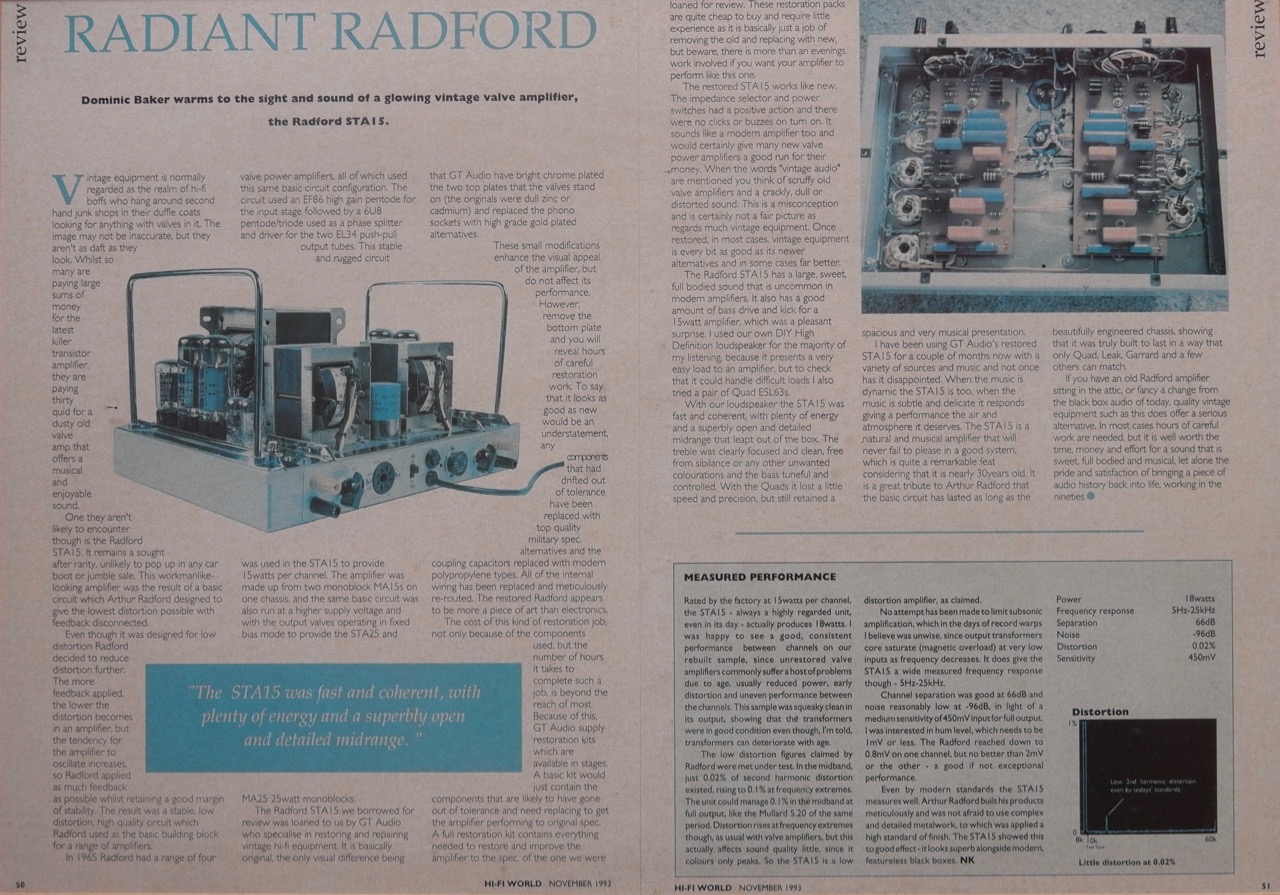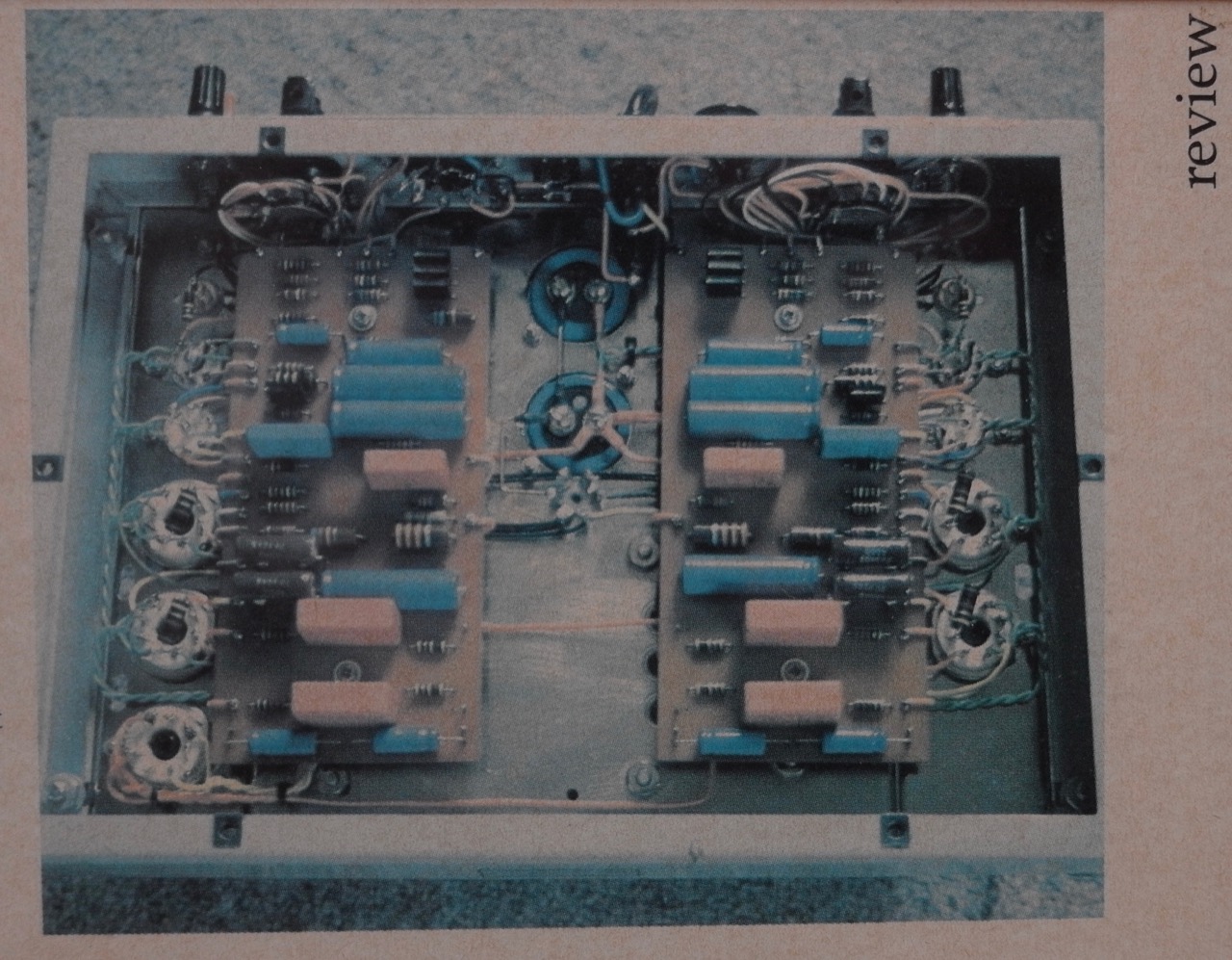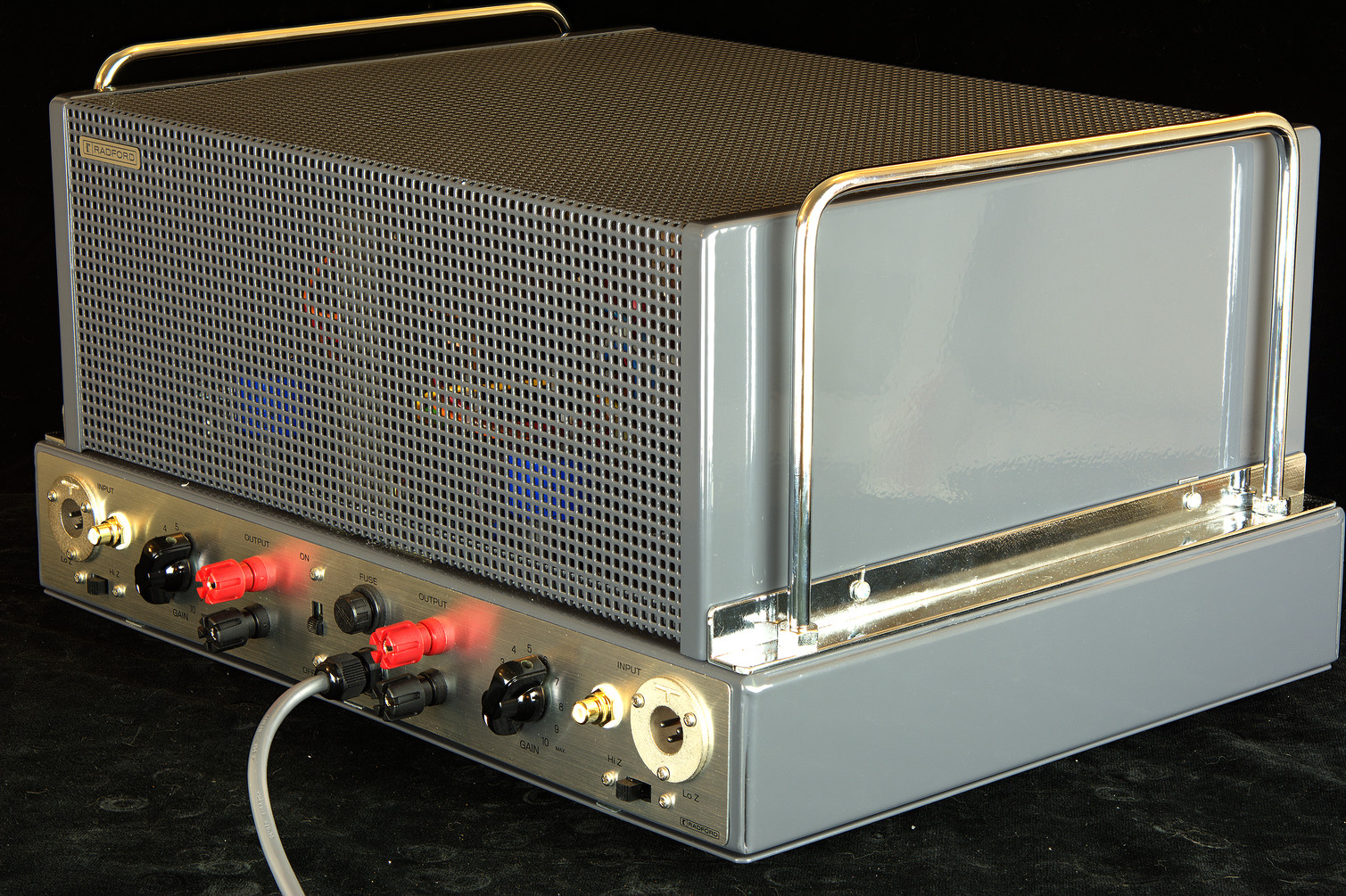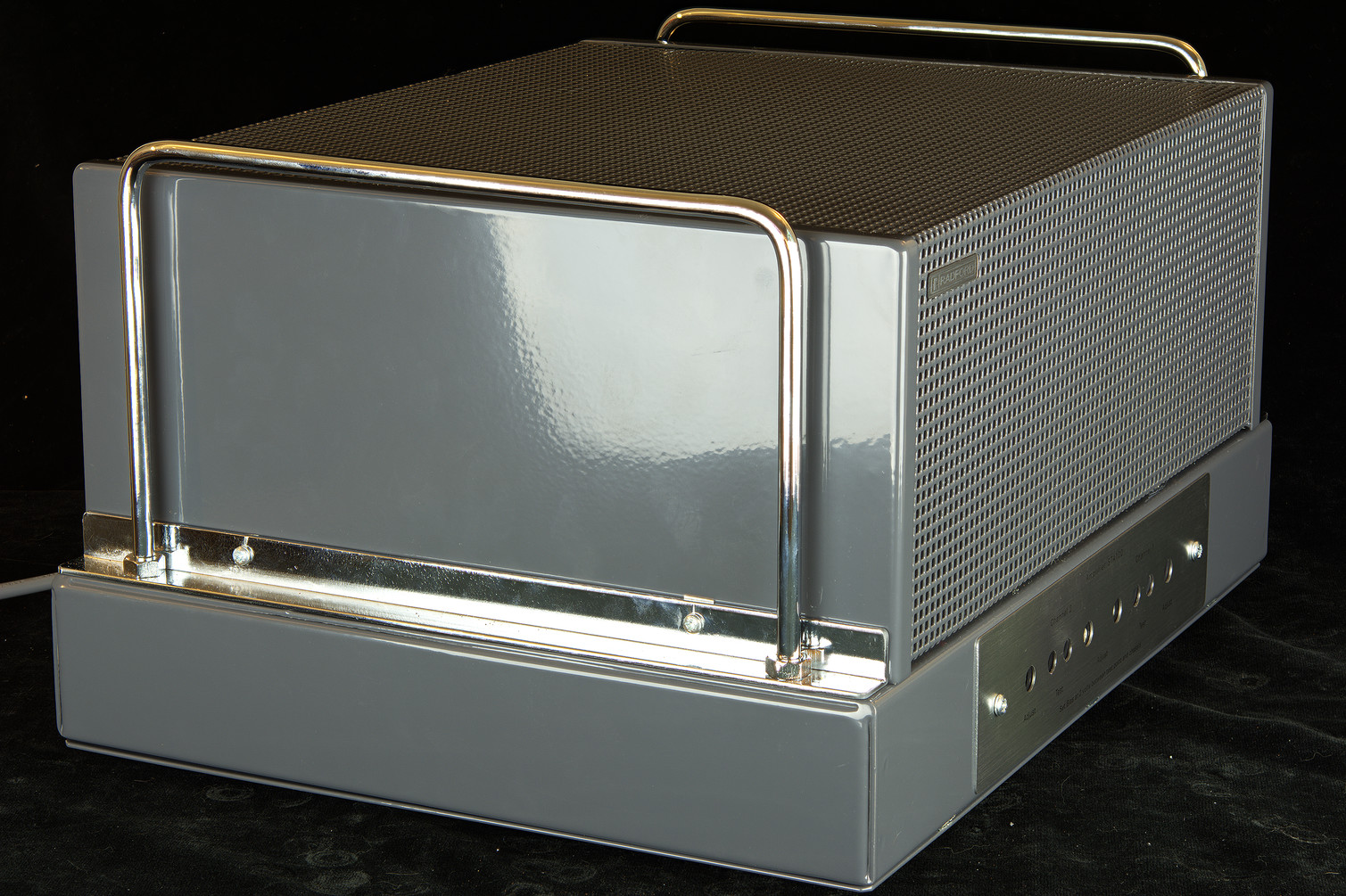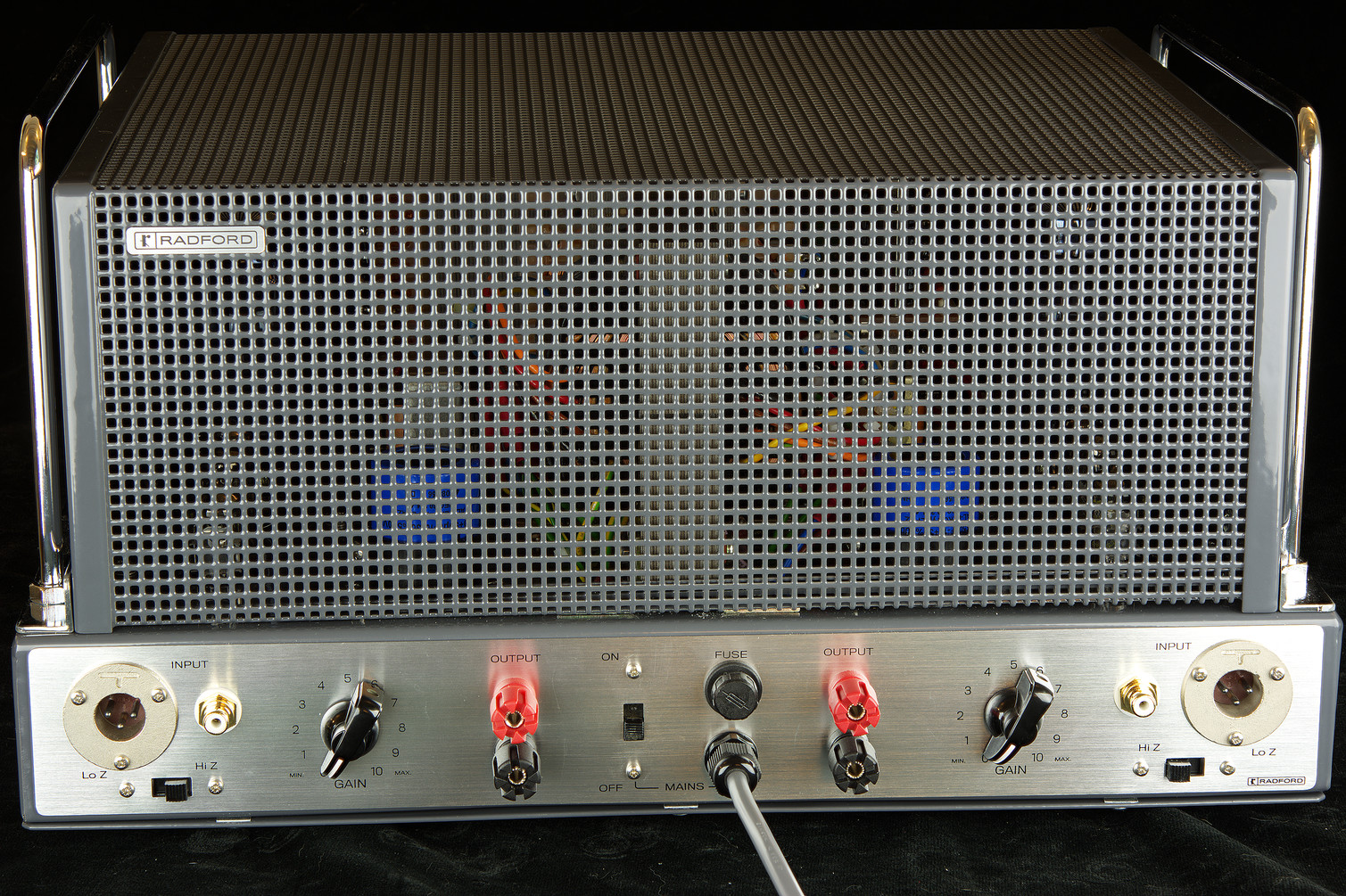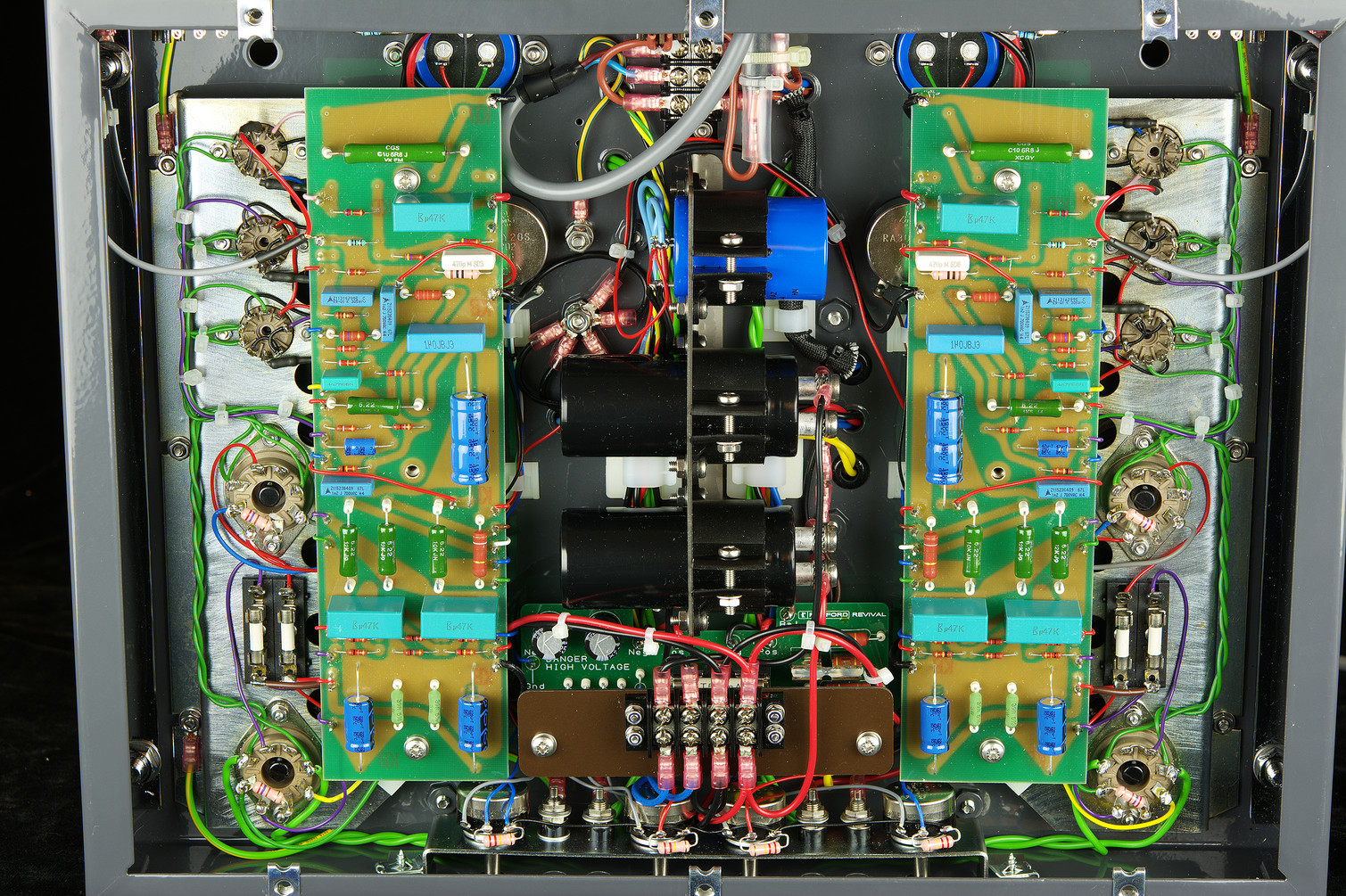Arkless Electronics
Trade: Amp design and repairs.
The comparison with the Krell I can’t answer with any confidence, and you have to bear in mind that they’re in different systems (Krell/Spendor SP1, Radford/JR149) So my next comment is very provisional.
The magic of the Krell is somehow that, in some recordings, it communicates a sense of place, the atmosphere of the place. The magic of my brief fling with the Radford was that, on one recording at least (Salomon Quartet, Haydn op50) it was really exciting! Like the instruments sounded tight, firm, fast and had punch.
What I can say is that the Radford at first sounded much more coloured than I’ve ever heard the Krell being, not in a bad way but certainly at first I said to myself that now I can hear what people mean by the warmth of valve sound. Though after a short time the impact of that wore off and it felt natural.
Oh, and I’ll mention another thought that went through my head, though this is very silly probably. At one time I thought to myself that It was as if the Radford sound was alive, produced by something living, a human sound. The Krell is produced by . . . a Krell.
(I’m listening now to the 149s with the Quad 306, and it sound really good! What do I know? . . . )
Whilst many months apart I've had both in my system and with Spendor speakers similar to your own and if I'd been able to keep just one of the amps it would have been a very difficult choice!! I didn't find the Radford notably coloured but it was slightly warmer sounding than the Krell. Not that the Krell was a cold sounding amp! Anyone's guess as to which was more "correct" on that score....
Both were punchy and dynamic but the Krell wins that one and ultimately wins on transparency. The Radford was very close in all this and pipped the Krell for a sense of well, it's not easy to describe... but a sense of the music existing separately from the hi fi... if that makes much sense... more like the music was just happening and less like it was being created by a hi fi.
Two of the very best amps I've heard and a tough choice! They say you should never meet your heroes, the legends, but I was very pleased that both fully met their exalted reputations!


